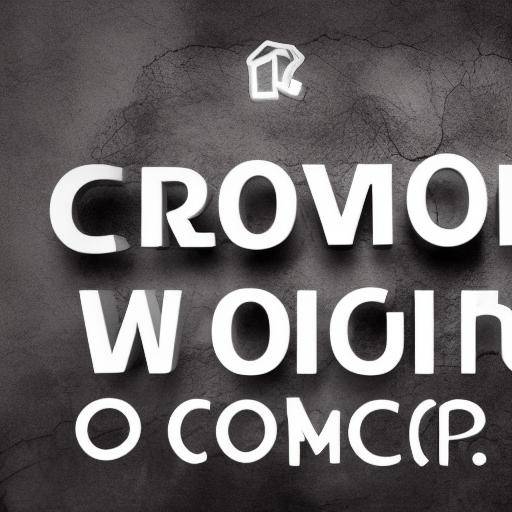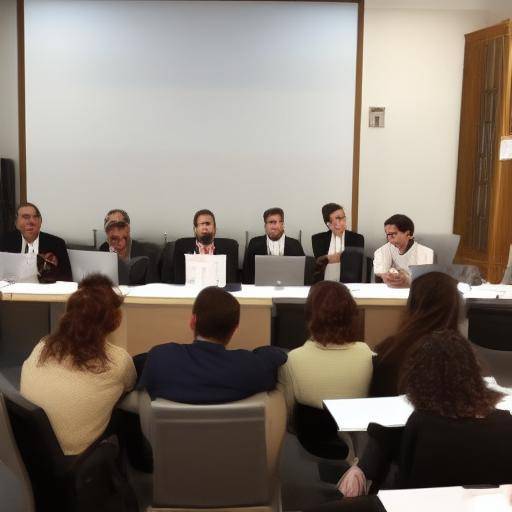
Introduction
Effective communication is crucial in all human interactions, especially in conflict resolution. Clarity not only fosters understanding, but also prevents misunderstandings and disagreements. In this article, the importance of clarity in communication for conflict resolution, as well as the interpersonal skills necessary to achieve it, will be addressed in detail.
History and Background
Clear and effective communication has been crucial in resolving conflicts throughout history. From ancient civilizations to contemporary conflicts, the ability to convey thoughts and feelings has been crucial in the prevention and resolution of discord.
Origins of clarity in communication
The need to transmit messages concisely and understandably dates back to the beginnings of human communication. From the pictograms of ancient civilizations to the development of complex languages, humanity has sought ways to express ideas clearly to avoid unnecessary confusion and conflicts.
Current developments and relevance
With the advance of communication technology, such as writing, printing, radio, television and digital media, the ability to communicate clearly has gained even greater relevance. As society becomes more interconnected, clear communication has become a fundamental requirement for resolving conflicts both personally and globally.
Current relevance
In the digital era, where interactions occur in real time through a variety of platforms, clarity in communication is more vital than ever. Lack of understanding can trigger misunderstanding, creating conflicts that could have been avoided with clearer and more accurate communication.
Analysis in Deep
Clear communication is not only important in historical evolution, but also has a significant impact on conflict resolution today.
Benefits of clarity in communication
- Promotion of mutual understanding: The clarity in communication ensures that all those involved understand the message in the same way, reducing the possibility of misinterpretations.
- Strengthening interpersonal relations: Clear communication fosters trust and mutual respect, essential elements for constructive conflict resolution.
- Minimization of misunderstandings: Clarity avoids confusion and incorrect assumptions, which are often the root of conflicts.
- Promoting transparency: Clear communication helps create an environment of transparency, where expectations and responsibilities are clearly defined.
Challenges and obstacles
Despite its importance, clear communication presents challenges in its implementation:
- Linguistic barriers: Differences in the language can hinder mutual understanding.
- Cultural differences: Cultural norms and expectations can affect the interpretation of messages.
- Intense emotions: Strong emotions can cloud judgment and hinder clear transmission of ideas.
- Lack of communication skills: Not everyone has the skills to communicate effectively and clearly.
Current and future trends
- Technology and communication: The use of digital platforms has changed the way we communicate, making clarity even more important to avoid misunderstandings in written and virtual communication.
- Training in soft skills: Organizations are increasingly investing in training their employees in communication skills to improve conflict resolution.
- Focus on empathy: Empathy and active listening are becoming key components of clear and effective communication.
Comprehensive review
Best practices for clear and effective communication
- Use simple and direct language: Avoid jargons and technical terms that may be misunderstood.
- Confirm understanding: Ask for feedback to make sure the message has been correctly understood.
- Practice active listening: Pay full attention to the interlocutor, showing interest and validating their feelings and perspectives.
- Being aware of emotions: Manage your own emotions and be sensitive to the emotions of others to maintain effective communication.
- Adapt the message to the public: Adjust the level of detail and tone of the message according to the audience to improve understanding.
Methods and techniques to improve clarity in communication
- Constructive Feedback: Provide clear and specific feedback to avoid misunderstandings and encourage growth.
- Paraphrase: Repeat in your own words what the other has said to confirm understanding and show that you are listening.
- Use of examples and analogies: Help illustrate complex points with concrete examples and family analogies.
- Non-verbal communication: Make sure that body language and facial expressions match the verbal message to avoid confusion.
Application in different contexts
- Working environment: Implement communication training programs for employees and leaders in order to improve collaboration and conflict resolution.
- Personal relations: Practice clear communication in personal relationships to strengthen trust and avoid misunderstandings.
- Resolution of international conflicts: Apply principles of clarity in international diplomacy and negotiations to avoid conflicts and foster cooperation.
Conclusions and FAQs
Conclusions
Clearness in communication is essential for effective conflict resolution. Through specific practices and techniques, it is possible to improve communication, prevent misunderstandings and strengthen relationships. Investment in clear communication skills not only benefits individuals, but also organizations and communities as a whole.
Frequently asked questions (FAQs)
1. Why is clarity in communication important?
The clarity in communication is important because it ensures that the message is properly understood, avoiding misunderstandings and unnecessary conflicts.
2. How can I improve my clarity in communication?
You can improve your clarity in communication using simple and direct language, practicing active listening, confirming understanding and managing your emotions effectively.
3. What are the main obstacles to clear communication?
The main obstacles include language barriers, cultural differences, intense emotions and lack of communication skills.
4. What techniques can help improve clarity in communication?
Techniques such as constructive feedback, paraphrasing, the use of examples and analogies, and coherence between verbal and non-verbal communication can help improve clarity in communication.
I hope this article has provided you with a deeper understanding of the importance of clarity in communication to resolve conflicts. Practice these techniques and see how your interactions and conflict resolution improve in your personal and professional life. Good luck!



